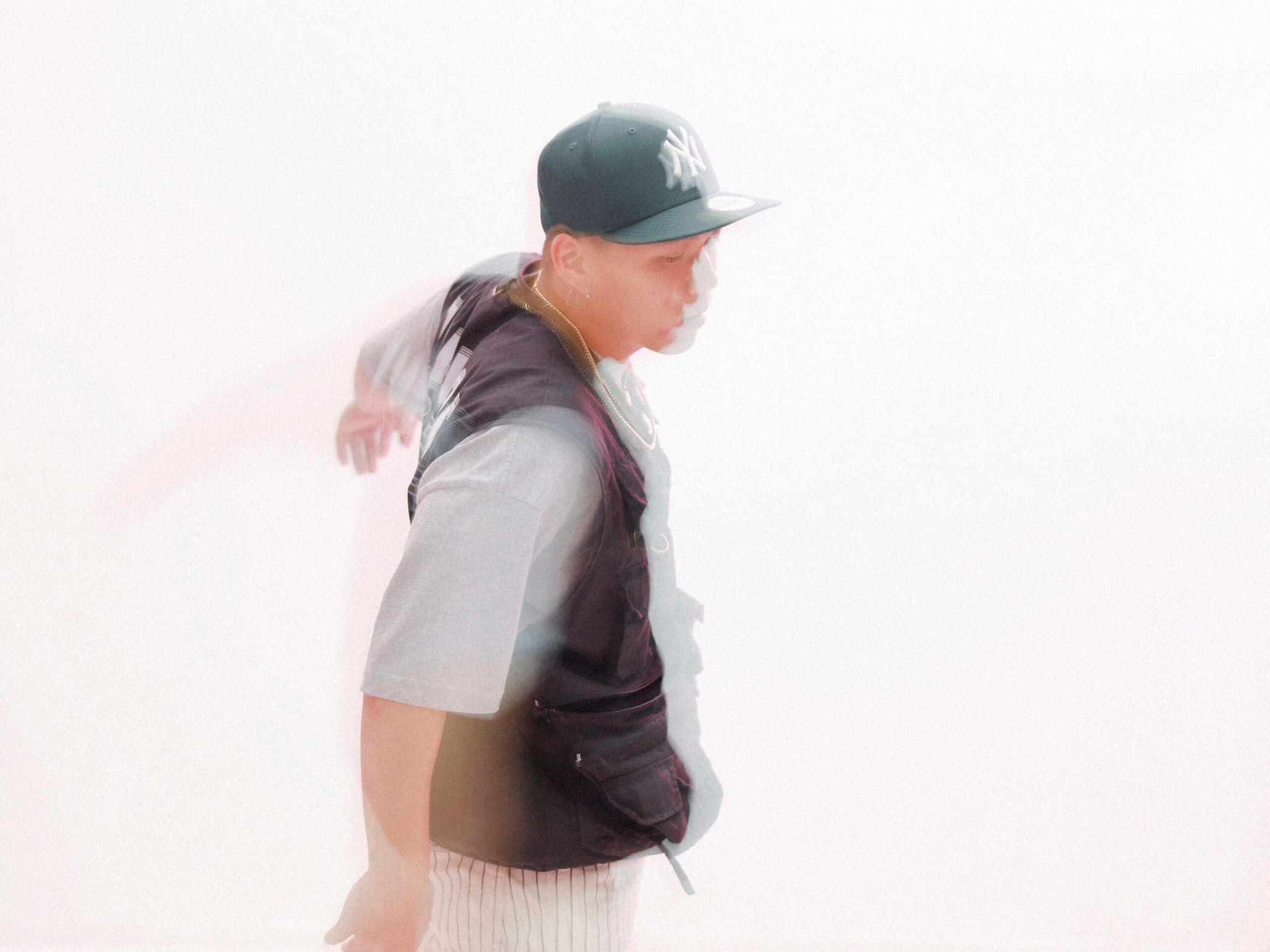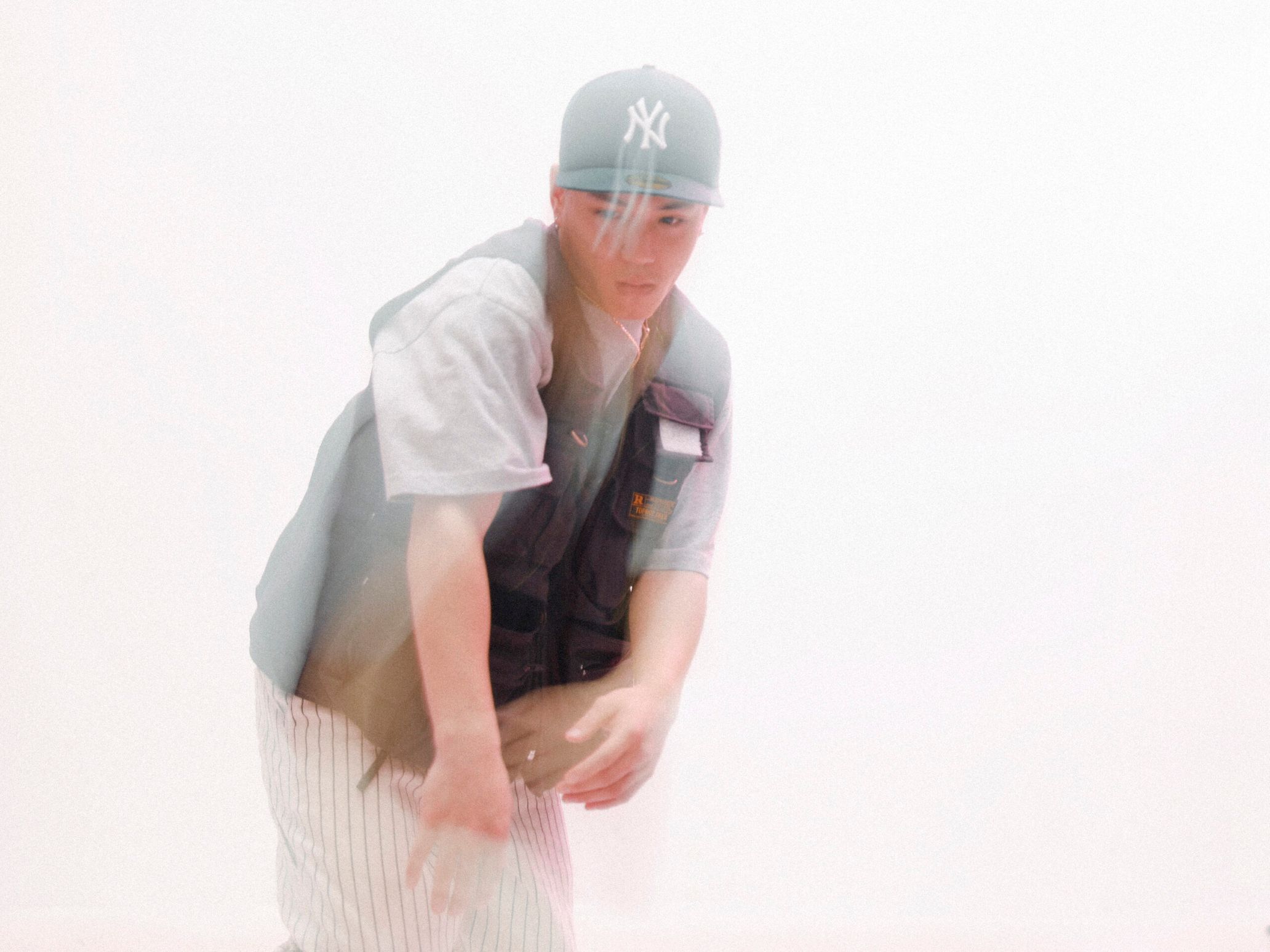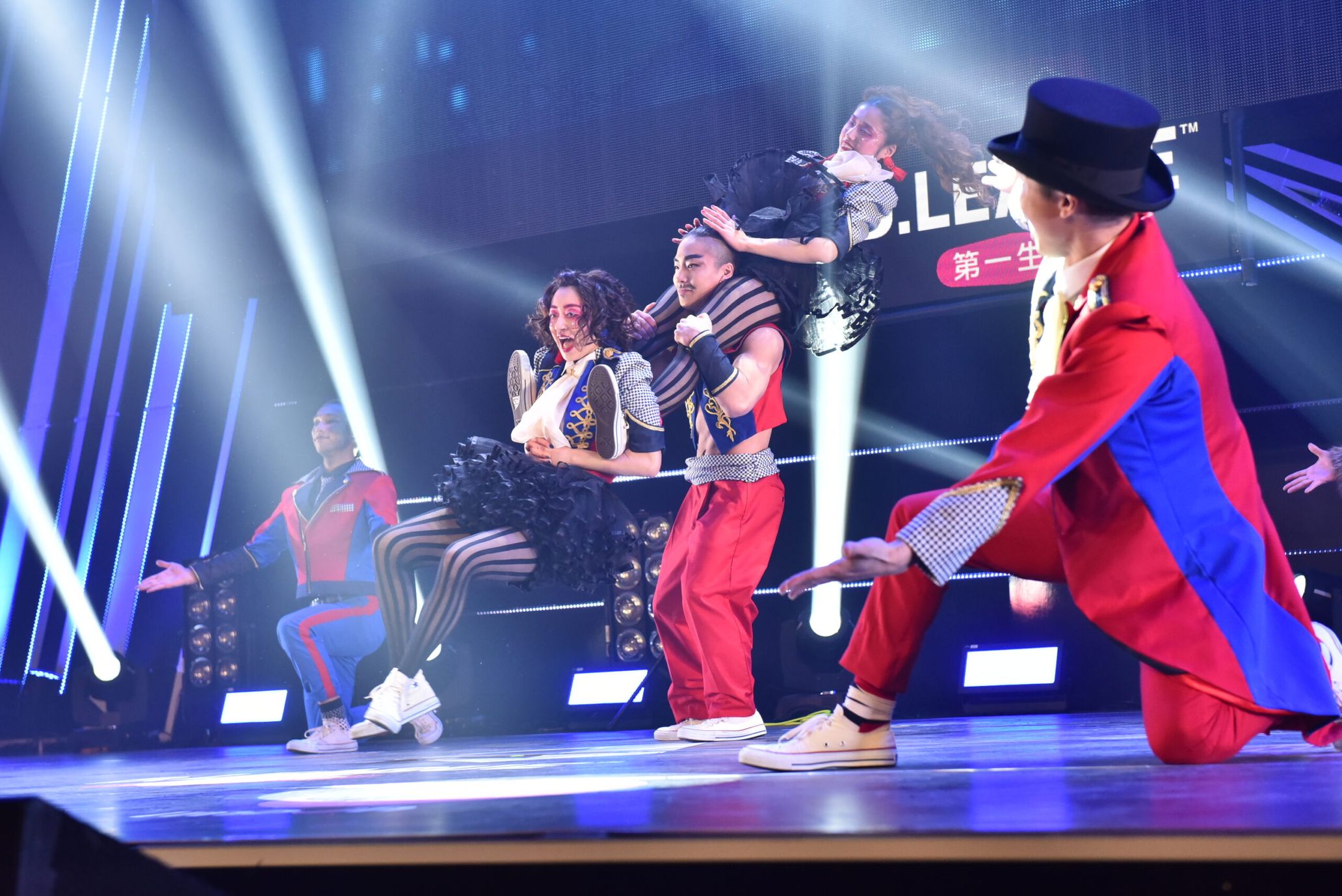Issei is a young breakdancer who took the world by storm as a teenager. With a history of earning inspiring international descriptors like “The first Japanese winner” and “The youngest winner,” he has continued to attract attention from in and out of the country. His dancing skills support these titles, and anyone who sees him perform will be entranced and drawn into a whirlpool of excitement. Issei is also the director-cum-dancer of KOSÉ 8ROCKS, a team belonging to Dai-ichi Life D.LEAGUE, a professional dance league founded last year. His work helps to uplift the Japanese breakdancing scene. Issei—who’s at the forefront—gazes at the present via the past. He also talks about the future of the dance form.
Being motivated after being told to quit dancing by his mother
――In 2012, dance classes became mandatory in Japanese middle schools, and breakdancing was added as an official sport for the 2024 Paris Olympics. Dance is becoming even more integrated into our daily lives. What are your thoughts on the current Japanese dance scene?
Issei: There are many dancers in Japan, and the level is high by international standards. More people start dancing by joining dance clubs in university or high school now. The scene is doing well. But it feels like it doesn’t speak to those who don’t dance, so I want to communicate the joy of breakdancing more.
――In any given era, I assume many people pick up dancing after they see TV shows highlighting it. Why did you start dancing?
Issei: At the end of kindergarten, my good friends invited me to their dance class. When I went to their dance event, I saw a breakdancing team called Kyushudanji perform. I thought, “I want to do it too!” and started dancing.
――And that leads us to today. Has your attitude towards dancing changed as you got older?
Issei: When I was in 7th grade, my mother told me, “You need to quit dancing and study!” But I wanted to keep dancing, no matter what. I contemplated how I could make her understand, and I thought the only way was to succeed. Until then, I had fun dancing in many genres. But I switched my motivation towards only accomplishing breakdancing.
――What sort of changes did you see after that?
Issei: I was a part of Kyushudanji Shinsengumi at the time. In the 8th grade, I won a preliminary contest in Japan that guaranteed the right for the winner to enter a worldwide championship. When I partook in it in London (UK B-Boy Championships), my mother understood. Also, the teacher of Kyushudanji Shinsengumi, Shuvan-san, asked me to join FOUND NATION, a breakdancing crew in Tokyo. My family became even more supportive after that.
――You’ve competed in many championships abroad since then.
Issei: Since joining FOUND NATION, they’ve taken me to so many countries. I especially remember R16 Korea, which I took part in in the same year as the London championship (2012). We performed as a crew, but there was a preliminary contest the day before for a solo tournament, and with only one slot left. An older dance member told me I should do it. I said no because our dance battle as a crew would be affected had I used up my tricks, but I got pushed to do it, so I did.
――You didn’t have as much confidence, you mean?
Issei: I had just joined [the team], and the older members of FOUND NATION, who were dancing at [the championship], were so good. My confidence was, honestly, just… When I saw all the top international dancers I used to watch on YouTube stand in front of me, I was like, “Is this Super Smash Bros. or what?” (laughs).
――So, it was the all-stars of the strongest characters (laughs).
Issei: Being among them and winning that preliminary contest meant I could move onto the final tournament the next day. I thought, “Am I even allowed to be in the preliminary contest?” But not only did I win the preliminary, but I won the [dance battles] at the actual tournament and ultimately won it.
――Wow!
Issei: Moreover, I got invited to Red Bull BC One and The Notorious IBE, which I had been striving for the most. Red Bull BC One was a championship I had looked up to for a long time. It was held in Brazil, and I was shivering the whole time even though it was hot. I barely remember the battles.
――Since 2012, you won R16 Korea three consecutive times, and at Red Bull BC One in 2016, you won the title of the world champion as the youngest and first Japanese person. You have a golden track record. I can’t imagine what it must be like competing against the top dancers in the world. When you battle, do you get excited and hyper, or do you remain calm?
The final tournament of Red Bull BC One, which Issei won as the youngest and first Japanese person in 2016.
Issei: If I had to say, I think I get hyped. I’m composed [in one situation], though; when I battle a B-boy whose style I don’t like. When it’s someone I wanted to dance against, I get so hyper that I forget the small things. I get like, “Let’s go!” (laughs).
――When do you feel the most hyper?
Issei: I get the most excited when I dance in front of a big crowd. It feels exhilarating when my tricks go well, and the audience goes wild. 360-degree stages where the audience surrounds you, like venues for national sports, are just brilliant. Solo dances are great, but I think the expressive abilities are infinite with crews. One appeal of breakdancing, which is one form of hip hop culture rather than dance culture, is creating a dance routine with everyone.
The importance of conveying something
――You’re right. Solo dances are cool too, but there’s even more impact when it’s a crew. You’re also working as a director and dancer of KOSÉ 8ROCKS, one of the D.LEAGUE teams, a professional dance league that started last year.
Issei: There are nine teams in D.LEAGUE, but each team has a different style. Our style is more so breakdancing. The Paris Olympics are taking place three years from now, so I do this, hoping to make breakdancing more popular.
©D.LEAGUE 20-21
――Many crews assign the role of a director to one person, and the others are dancers. Could you talk about how you came to take on both roles?
Issei: An older member of FOUND NATION nonchalantly called me and said, “We’re going to start a professional dance league called D.LEAGUE. Do you want to be the director and dancer?” Until now, I didn’t have a clear definition of a professional dancer, so D.LEAGUE was appealing, as everyone could dance professionally. I like standing out, so I went with the flow and responded, “That’s dope! I want to try it out!” (laughs).
――How is it, now that you’re doing that task?
Issei: It’s super hard, and there’s a lot of pressure. It’s like that casual attitude I had was a lie (laughs). But it’s very fulfilling, and it’s a good experience. I have more things to consider now, so I’m having more fun than ever.
――What kind of pressure do you feel?
Issei: I have many things I need to do as a director, like choosing the songs, costumes, overall dance moves, and direction of the team. But the first pressure I felt was picking out the members. Our team has dancers I used to battle with, so I was nervous I couldn’t bring everyone together. There are ten members in 8ROCKS, but only eight can stand on D.LEAGUE’s stage. Meaning, two people get left out. The mood of our dance practices was sour because of that, towards the beginning.
――Of course, everyone has pride.
Issei: Back then, I didn’t know what words would make them understand. I felt like that wasn’t a good thing, so I’m now studying that little by little. I think about how to take care of our mental health and how I should talk to them. It’d be great if that could lead to something later on. More than anything, it’s fun because I have so much to learn.
――What have you learned about taking leadership?
Issei: I wholly believe you need to have the same sensibilities as the other person. The ultimate thing to know the other party’s situation and state of mind is communication. It’s vital to make things better after you listen to what everyone’s got to say. I’m still in no place to say this, but trust is crucial, too. I don’t want to be staunch and lead the team. Because the crew is unified, I feel like they’re the ones pulling me forward. Thanks to them, I’m now able to look at the team from a bigger perspective.
――Aside from the techniques, what other points should we look at to enjoy breakdancing?
Issei: Like characters in a game, B-boy dancers have different styles. Some have aggressive battle styles, while others are smiley and more relaxed. Some even have comical ones, too. So, I think it’s fun to look for around three dancers that you like. Then, you’ll see the difference in their traits and develop preferences like, “I like this, that’s cool.” Dancing isn’t hard, but it becomes hard when you think too deeply about it. Simply put, dancing is just about moving one part of your body along to the music. So, I want people to watch dancers in a casual and fun way.
A breakdancing video that Issei recommends. The video is of an American B-boy, Cloud, whose dance moves match the sounds, making it the perfect introduction to breakdancing
――During this interview, you said you want to spread breakdancing on more than one occasion. Could you expand on that?
Issei: Many people know about breakdancing but aren’t knowledgeable about it. I think it’s important to communicate it in an easy-to-understand manner. Make something difficult easy to understand, make something easy to understand even easier to understand. I think right now is a perfect time since D.LEAGUE started. Until this point, I felt like as long as we looked fresh and had fun dancing, it was enough. That’s what I liked and wanted. But to get to that next stage, I need to change my mindset. I want to maintain my balance without becoming a trade-off and expand my horizons. I do YouTube and TikTok; I never would’ve imagined I’d do it (laughs). But it’s about accumulating those things and trying to bring those into fruition at the Paris Olympics three years from now. I first need to achieve good results with D.LEAGUE.
Issei
Born in Fukuoka prefecture in 1997. Issei studied dancing at Studio MJ, a dance school run by Shuvan, a member of FOUND NATION, and joined the kids’ breakdancing team Kyushudanji Shinsengumi. In 2012, he won the solo category of R16 Korea, one of the worldwide championships. He went on to consecutively win in 2013 and 2014. Issei was the first Japanese person and the youngest person to win Red Bull BC One, an international championship many breakdancers aim for, in 2016—an impressive feat. He is active as a director and dancer of the breakdancing team KOSÉ 8ROCKS of Dai-ichi Life D.LEAGUE, the first domestic professional dance league founded in 2020. He was selected as the best breakdancing representative of Japan, as it became one of the official sports for the 2024 Paris Olympics. The expectations for and excitement about Issei are increasing.
Instagram:@fncbboyissei
Twitter:@bboyisseifnc
YouTube:FLAVAJAPAN – ブレイクダンス TV –
KOSÉ 8ROCKS
Instagram: @kose8rocks
Twitter:@kose8rocks
TikTok:@kose8rocks
Photography: Shinpo Kimura
Text: Shogo Komatsu
Translation Lena Grace Suda













